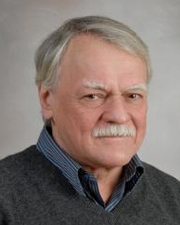Areas of Interest
Research Interests
Photobiology, Photosensory transduction, Photoconversion, Retinal proteins, Channelrhodopsins
My current research is focused on the functional analysis of channelrhodopsins (ChRs) in their source organisms and heterologous systems. ChRs are light-gated ion channels from eukaryotic protists that use retinal as their chromophore. We have demonstrated that in the model chlorophyte alga Chlamydomonas ChRs act as photoreceptors guiding phototaxis, i.e., oriented movement towards the light source. Photoexcitation of ChRs results in the generation of passive transmembrane photocurrents that depolarize the membrane and eventually induce flagellar motor responses. Expression of ChR genes in mammalian neurons or cardiomyocytes enables manipulation of the membrane potential with light (optogenetics) and is widely used in biomedical research. However, the coupling between retinal photoisomerization and channel gating in ChRs remains poorly understood. To gain more insight into it, we use patch clamp recording of ChR photocurrents in cultured mammalian cells and transient spectroscopy of ChRs purified from Pichia pastoris. Several hundreds of ChR genes have been identified, but only a few encoded proteins have been characterized biochemically and biophysically. We have demonstrated tremendous diversity of ionic selectivity, photocurrent kinetics, and spectral sensitivity of ChRs. My goal is to build a predictive model of the ChR function and to explain the structure-function relationships in the ChR molecules.
A proposed scheme of the photocycle in a red-shifted anion-selective ChR. The red, blue, and violet arrows show photoinduced conversions; the black arrows, thermal conversions. The double-headed green arrows show the lifetimes of the channel open states.
Education and Training
Undergraduate
Moscow State University, Moscow, Russia
PhD
Moscow State University, Moscow, Russia
Postdoctoral Fellow
University of Marburg, Marburg, Germany
